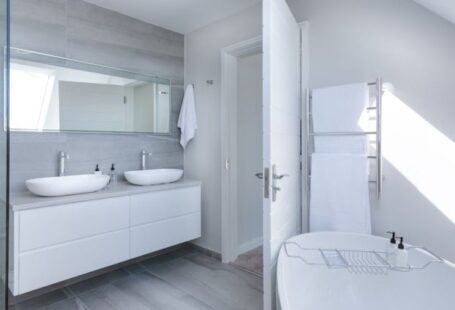Creating a Soundscape: How Planting a Green Wall Enhances Indoor Acoustics
In the realm of interior design and architecture, the concept of incorporating greenery into indoor spaces has gained significant traction in recent years. From small potted plants on desks to expansive living walls, the presence of vegetation within built environments is not merely an aesthetic choice but also a functional one. One intriguing aspect of integrating greenery indoors is its impact on acoustics. While the visual appeal of green walls is often touted, their contribution to creating a more pleasant auditory environment is a lesser-known benefit. Let’s explore how planting a green wall can influence indoor acoustics, offering both practical and aesthetic advantages to the occupants.
Enhancing Sound Absorption
One of the primary ways in which planting a green wall affects indoor acoustics is through its ability to enhance sound absorption. In spaces with hard surfaces like concrete floors, glass windows, and bare walls, sound waves tend to bounce off these surfaces, creating reverberation and leading to increased noise levels. This phenomenon can be particularly problematic in large open-plan offices, restaurants, or public areas where conversations and activities generate a cacophony of sounds.
By introducing a green wall into such a space, the plants act as natural sound absorbers, helping to dampen and scatter incoming sound waves. The leaves and stems of the plants disrupt the path of sound waves, causing them to lose energy as they collide with the foliage. As a result, the overall noise level in the room decreases, creating a more peaceful and comfortable environment for occupants. This enhanced sound absorption is especially beneficial in spaces where speech intelligibility is crucial, such as conference rooms or classrooms, where minimizing background noise can improve communication and concentration.
Improving Acoustic Privacy
In addition to reducing overall noise levels, planting a green wall can also enhance acoustic privacy within a space. In open-plan offices or commercial settings, maintaining confidentiality during meetings or sensitive conversations can be challenging due to the lack of physical barriers. Sound easily travels across such environments, compromising privacy and increasing distractions for occupants.
A strategically placed green wall can serve as a natural partition, visually and acoustically delineating different areas within a room. The dense foliage of the plants acts as a barrier that obstructs the direct transmission of sound waves, creating a sense of seclusion and privacy for individuals on either side of the wall. This improved acoustic privacy not only enhances the comfort and productivity of occupants but also contributes to a more harmonious and functional workspace.
Creating a Calming Ambiance
Beyond its practical benefits in terms of sound absorption and privacy, a green wall can also have a profound impact on the overall ambiance of a space. The presence of lush vegetation indoors has been scientifically proven to reduce stress, improve mood, and increase feelings of well-being among occupants. This psychological effect is known as biophilic design, which emphasizes the innate human connection to nature and the positive influence of natural elements on our health and happiness.
In the context of indoor acoustics, the calming and soothing qualities of a green wall can help mitigate the negative effects of noise pollution on occupants’ well-being. By creating a more serene and tranquil environment, the presence of plants can offset the stresses of urban living and enhance the overall quality of the indoor soundscape. This holistic approach to design not only benefits the occupants but also contributes to a sustainable and eco-friendly built environment.





